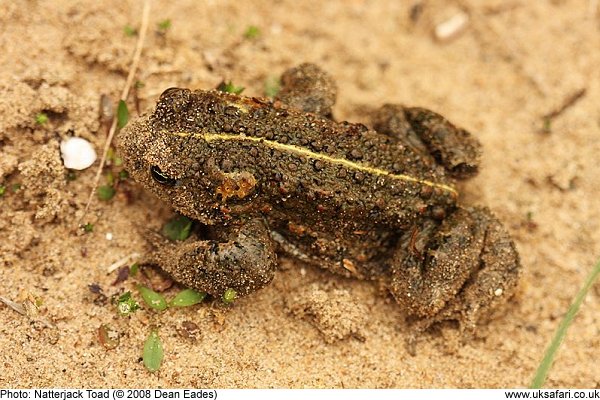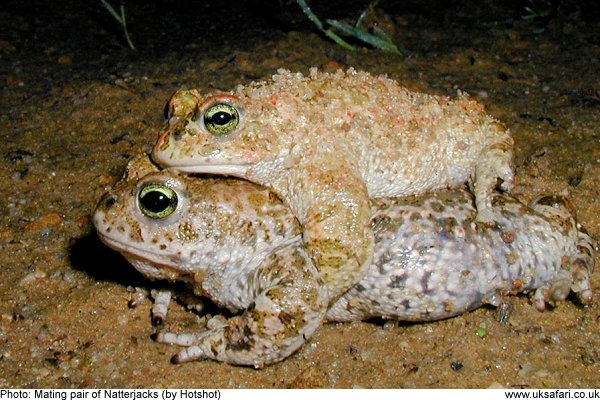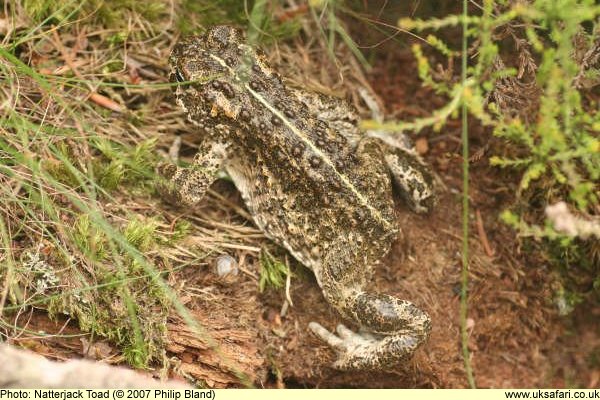 Quick Facts
Quick Facts
Scientific name: Bufo calamita
Size: 60 - 70mm
Distribution: Rare. The main populations are found in Suffolk, Norfolk, Lincolnshire, Lancashire and the Cumbrian coasts. There are some smaller populations in Bedfordshire, Staffordshire, Kent, Oxfordshire, Surrey, Hampshire, Dorset and Strathclyde. Recently reintroduced to North Wales
Months seen: March to October
Habitat: Sand dunes, salt marshes and open, unshaded areas with sandy soils
Food: Invertebrates
Special features: Natterjack Toads can be distinguished from Common Toads by the bright yellow line running the length of their backs. They're are also smaller in size. They are fast movers, preferring to run rather than hop or walk.
Natterjack toads spawn from March to May. The spawn is produced in a single string, unlike that of the common toad which is a double string. Although the tadpoles develop into toadlets in about a month they can take up to four years to fully develop.
Natterjacks have become rare in the UK due mainly to habitat loss. They're quite picky about where they spawn, which is why the species is declining. Natterjacks need shallow ponds for reproduction, and these are often seasonal pools. The ponds need to be almost completely free of vegetation, with a pH of between 5 and 7. The ponds also need to be free of predators such as dragonfly larvae, beetle larvae and even common toads. Common toad tadpoles will eat the tadpoles of Natterjack toads.
During the winter Natterjacks hibernate in burrows which they dig themselves in soft sand.
NOTE: It is an offence to disturb Natterjack toads in any way.
 Related Pages
Related Pages

 Popular Pages
Popular Pages
Amphibians, Bats, Badgers, Beetles, Birds, Birds of Prey, Bumble Bees, Butterflies, Caterpillars, Creepy-Crawlies, Deadly Spiders, Dolphins, Dragonflies, E-Postcards, False Widow Spiders, Free Newsletter, Frogs, Fungi, Garden Spiders, Glow-Worms, Grey Squirrels, Hedgehogs, House Spiders, Ladybirds, Mammals, Marine Mammals, Moths, Owls, Reptiles, Spiders, Toads, Trees, Wildlife Hospitals
© Copyright 2017 G. Bradley - UK Safari | About Us | Links | Contributors


 Natterjack Toads
Natterjack Toads




